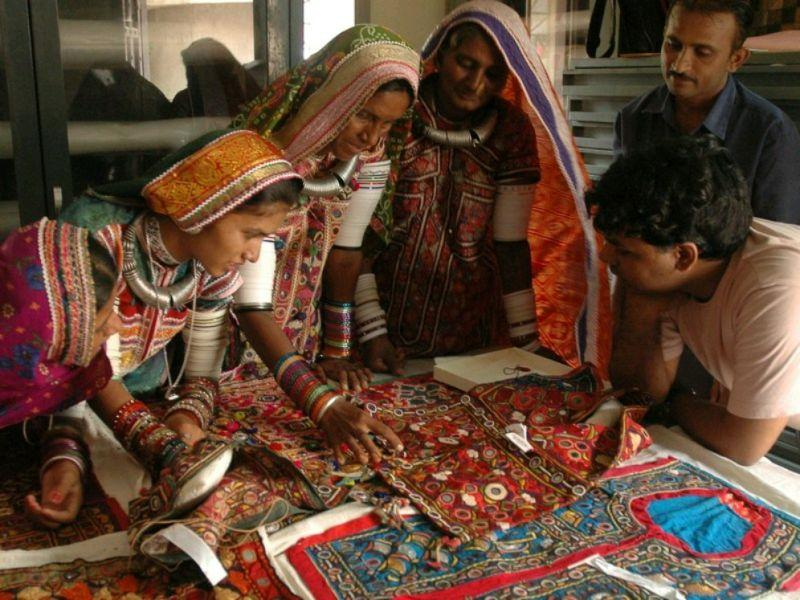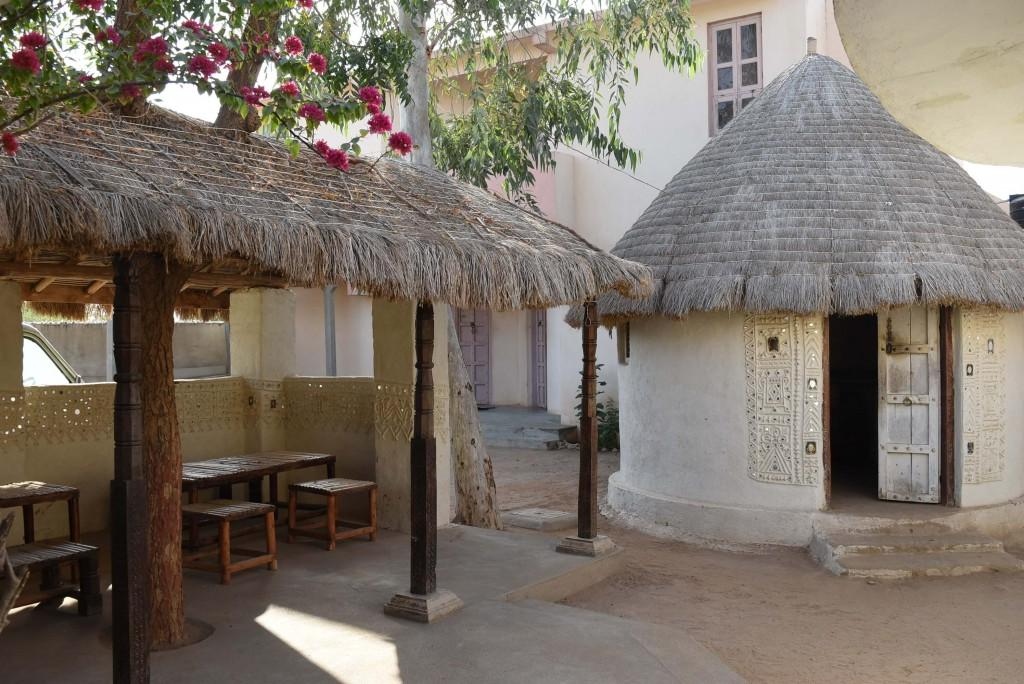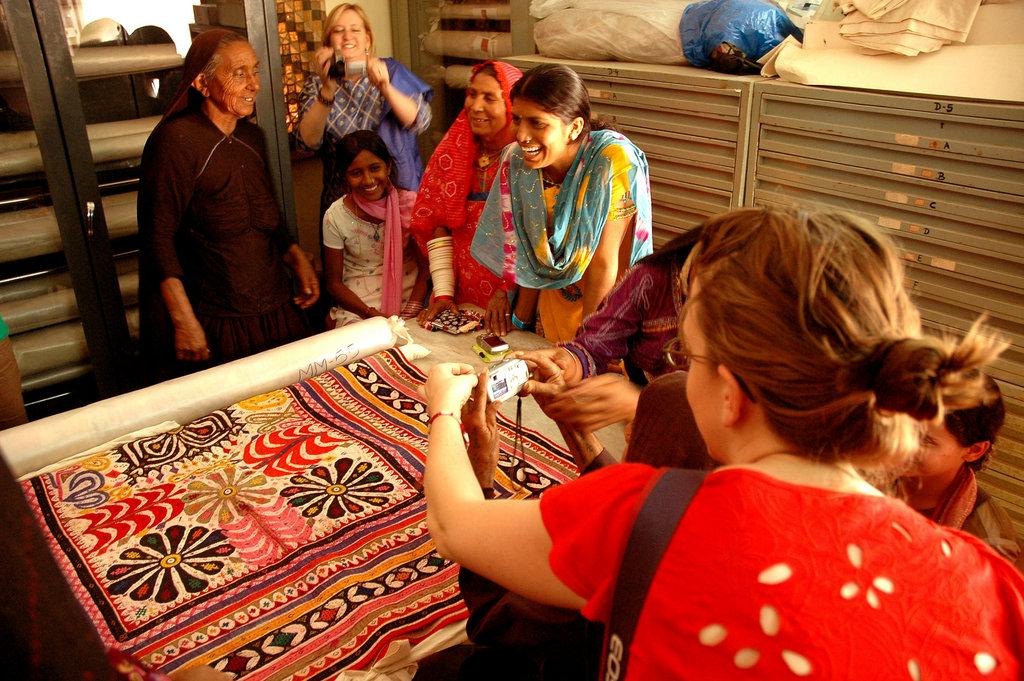In the enchanting land of Kutch, where vibrant colors and intricate designs weave tales of heritage, a remarkable organization known as Kala Raksha has emerged as a beacon of art preservation. With a deep understanding that preserving cultural traditions requires the collective effort of entire communities, Kala Raksha has embarked on a remarkable journey. As we delve into the extraordinary story of Kala Raksha, we discover how their visionary approach proves that it truly takes villages to preserve art.

Kala Raksha, which translates to “Art Preservation,” was initially established as a grassroots initiative. In 1993, it gained official recognition as a registered society and trust under the guidance of Judy Frater and Prakash Bhanani. The organization’s primary objective is to safeguard the traditional arts of the region by ensuring their cultural and economic sustainability. All endeavors undertaken by Kala Raksha are driven by the artisans themselves, and the organization encourages community members to collaborate towards achieving self-sufficiency. By generating income through their artistic traditions, community members can both realize their strengths and preserve their cultural identity as they progress.
Comprising artisans, community members, and experts in art, design, rural management, and museums, Kala Raksha currently collaborates with nearly 1,000 embroidery artisans from seven different ethnic communities. These artisans create some of the most exquisite hand-embroidered and patchworked garments, accessories, and home furnishings originating from the Kutch region. Kala Raksha employed a strategy of utilizing local resources to establish and grow the organization. This involved hiring community members as staff and leveraging local networks. However, the most valuable asset and resource was the cultural heritage itself. Instead of viewing traditions solely as a means to an end, Kala Raksha recognized them as fundamental elements. The organization aimed to mobilize these distinctive aesthetic identities.

In a groundbreaking move in 2005, Kala Raksha took a significant stride towards securing the future of craft traditions by establishing the Kala Raksha Vidhyalaya, the first-ever design school exclusively dedicated to artisans. Recognizing that empowering artisans as designers would not only preserve the authenticity of their craft but also enhance their income and social standing, the school embarked on a mission to cultivate a new generation of skilled artisans. The impact was profound, as the initiative catapulted Kala Raksha into the spotlight, expanding its reach and capabilities.
A vast network of invaluable connections both within and beyond India began to flourish, with generous support pouring in from individuals and organizations around the globe. By 2011, the year-long program had already produced ninety-nine accomplished artisans who graduated with enriched skills and a promising future ahead. Collaborating with Kala Raksha has brought about a transformative shift in the attitudes of artisans. Their association with the organization has not only granted them a sense of pride in their craftsmanship but has also ignited a newfound appreciation for their cultural heritage. Through their increased earnings, artisans have gained a renewed sense of pride in being artisans, a sentiment that trickles down to their reverence for tradition and cultural identity.

In conclusion, Kala Raksha has proven to be an influential force in the preservation of art and the empowerment of artisans in the enchanting land of Kutch. Through their grassroots efforts and strategic utilization of local resources, Kala Raksha has established itself as a beacon of art preservation, officially recognized as a registered society and trust.
By fostering a collaborative approach and encouraging community members to actively participate, Kala Raksha has enabled artisans to work towards self-sufficiency and economic viability while preserving their cultural traditions.
In essence, Kala Raksha exemplifies the power of unity and community-driven initiatives in preserving art. By embracing the philosophy that it takes villages to preserve art, Kala Raksha has not only secured the future of craft traditions but also uplifted the livelihoods and cultural identities of artisans. Their journey serves as an inspiration and a testament to the enduring beauty and resilience of art and the communities that sustain it.
Citation :
- Murphy, Marilyn. 2013. “Kala Raksha, 20 Years Preserving Traditional Art and Empowering Artisans”. Retrieved from https://www.clothroads.com/kala-raksha-empowering-artisans/
- Kala Raksha Vidhyalaya. (n.d.). Retrieved from https://kala-raksha-vidhyalaya.org/contactus.php
- Kala Raksha Museum. (n.d.). Retrieved from http://www.kala-raksha-museum.org/
- Frater, Judy, “Kala Raksha: From Cultural Identity to Intellectual Property” (2012). Textile Society of America Symposium Proceedings. 685.















